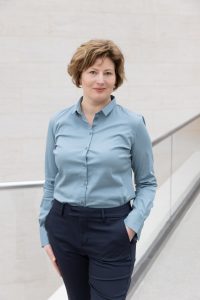
From Idea to Realisation – Interview with Petra Larass and Stephanie Neuner
12 September 2024
With the exhibition “Dive into the Picture! Time Travel for Kids” the Deutsches Historisches Museum is showing an inclusively designed exhibition primarily for children of grade school age. It is based on the Picture of the Month “January – February – March”, which belongs to the famous seasonal cycle of the so-called “Augsburg Pictures of the Months” from the 16th century, one of the most important artworks in the DHM collections. Here the world of 500 years ago unfolds before us as if we were in a 3-D walk-in backdrop. The people portrayed in the painting emerge into the exhibition room as historical figures who tell their stories and invite the young guests to explore and experience the world of the 16th century.
In our interview series we speak with the people and teams that have made this exhibition possible through their ideas and expertise. In this interview, the curators Petra Larass and Stephanie Neuner talk about different aspects of the exhibition.
“History is simply great fun and you can discover so much.”
Colin, pupil in Class 5c of the elementary school at Tränkegraben Berlin-Lichtenberg and member of the children’s advisory board of the exhibition
You are the ones who developed the concept for the DHM’s first children’s exhibition. Why are children an important target group for a museum of history?
Petra Larass: It is always the children of today who later shape our future as adults. Not an easy job. Therefore we see it as our museal mission to provide children at a young age with an access to history in a playful and explorative way. We want to empower the children to develop a position towards complex corelations of the past and present. As a historical museum we convey history above all through historical objects. And they reveal a great deal about the life and activities of past times. Ten-year-old Mika, a member of the advisory board of the children’s exhibition, puts it in a nutshell: “We have to know what has happened in the world. You don’t know this when you are born. And you have to know what is good: what you can do again and what you shouldn’t repeat.”
In our work we have the pleasure of experiencing again and again how great the children’s joy is in diving into past times. Children are curious, want to discover things and get to the bottom of them. They are just as fascinated by historical objects as adults are and have a lot of critical questions. And that is exactly what we as a museum can also give the children: that it is worthwhile to call things into question. We don’t want to only do this for the children in this first temporary exhibition, but also in a long-term exhibition for children and families within the framework of the new Permanent Exhibition in the Zeughaus on which we are currently working.
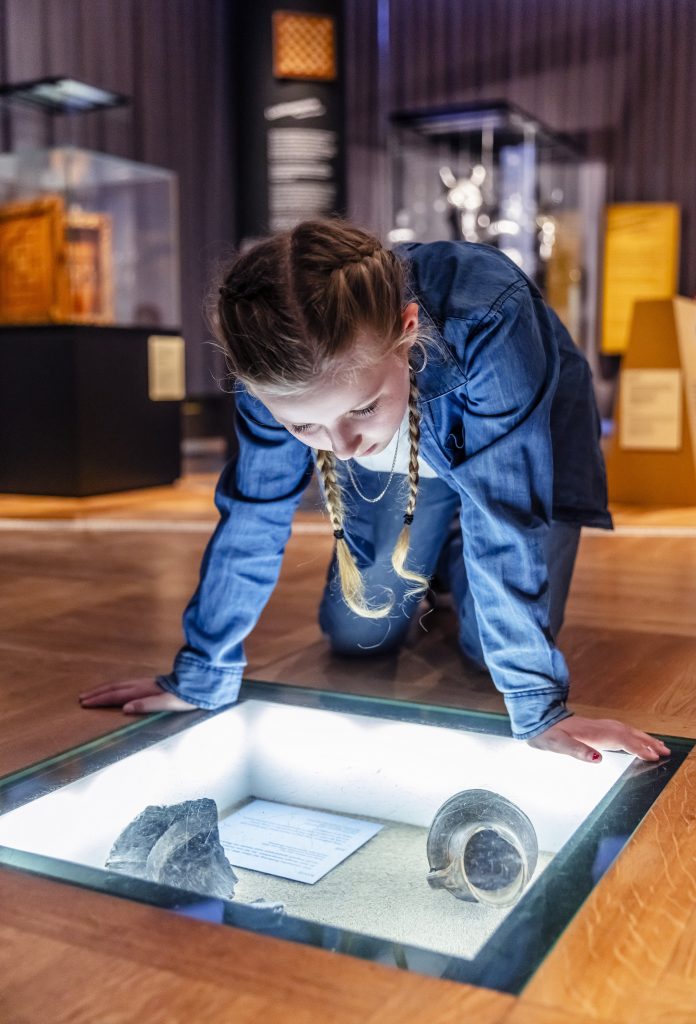
Why did you choose a painting from the cycle of the Augsburg Pictures of the Months as the topic of the exhibition?
Stephanie Neuner: The Augsburg Pictures of the Months are highlights of our collection and for months we have been involved in an exciting process of restoration. The depictions in the large-format Renaissance paintings already met with great enthusiasm from people of all ages in the former Permanent Exhibition and now that they are being restored they can be seen even better. The Augsburg picture of the month that we are showing has received a new frame so that it is easier to understand the context of its historical reception situation and presentation. That was the basis for devoting ourselves to a new perspective on the painting.
Petra Larass: In the end we also selected this exhibition idea because our children’s advisory board, “The Clever Magic Dragons”, with which we have been working for the past three years, were completely enthusiastic about the Augsburg Picture of the Month. The painting was very well received by our target group from the beginning.

What were the guidelines for the development of the concept?
Stephanie Neuner: First we thought about what an exciting narrative access to the historical content of the painting could look like. We decided on four narrative figures that can be seen in the painting and where we could let them climb out of the picture into the exhibition. These narrative figures take the young visitors by the hand and tell them their story. A shepherd draws them into the theme of people and nature, a wealthy patrician woman greets the visitors in her household and tells them about the society and material culture of the time. A young man who introduces himself as the son of a merchant from Lisbon invites them learn about trade and handicrafts in Augsburg. A tournament rider talks about the games and music of the period.
For us it was a fascinating challenge to find topics based on the painting that could provide an access to the worlds of the Early Modern Age. In our exhibition we also always want to encourage the young visitors to look behind the scenes of the beautiful world presented in the painting. We want to develop their critical view: Take a close look! Consider for a moment if you really think that everything went along as peacefully in a city of that time, were all the people so rich, so well-dressed and so well-fed? What was behind this wealth in the Imperial City of Augsburg whose merchants were already trading worldwide in the 16th century? Children are critical enough to quickly differentiate between appearance and reality, with a view to the past and to our present day.
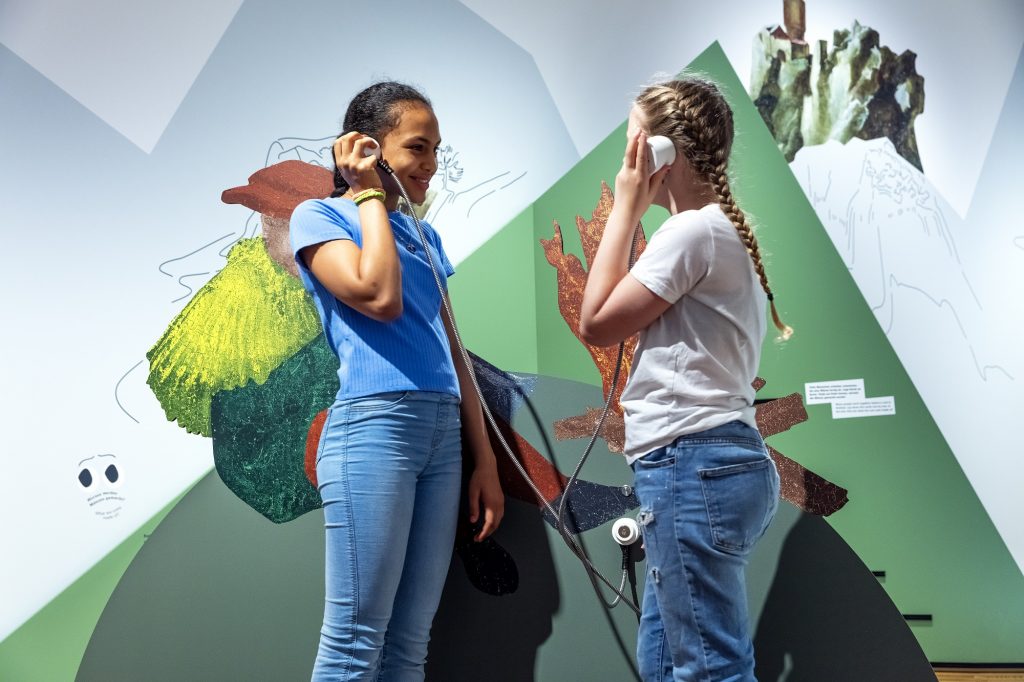
The exhibition consists of two areas – an exhibition room and a workshop room. How did this division come about?
Petra Larass: The exciting thing about the painting is that it actually has two sides: the prominent visible side, but also a side on the back covered by a canvas stretcher frame that is generally not seen by the public. Our children’s exhibition is correspondingly divided in two, because it deals with both the visible side and the back side, namely the history of the pictures as well as their restoration. In the workshop area we provide a look at the practical aspects of work in the museum. The two parts of the exhibition supplement each other and are both appreciated by our guests. And the workshop area also promotes the creativity of the young visitors, who can participate in enriching the large landscape panorama on the wall with their ideas.
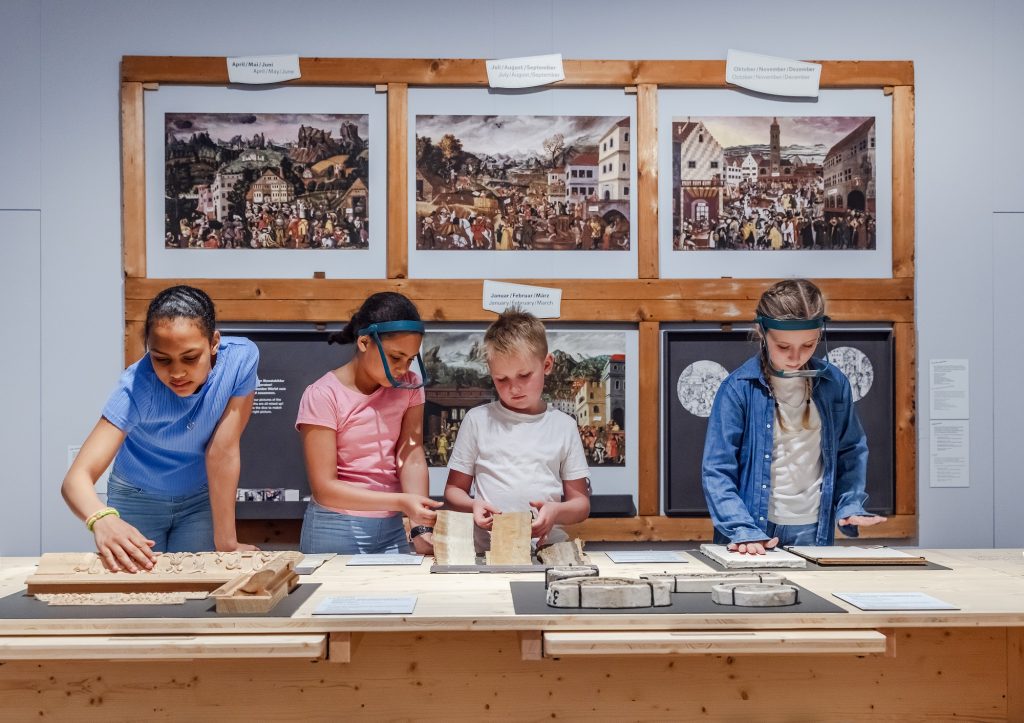
What is the difference between an exhibition for children and one for adults?
Petra Larass: To begin with, not very much, because an experience-oriented and atmospheric approach is equally stimulating for children and adults. The participatory occasions that form a link to one’s own life facilitate the access to historical topics. The difference is more likely the consequential link of the historical objects to occasions for interactive playing. Children like to learn through movement and action. The topic that is being conveyed to them becomes exciting when they can weigh into it with body and mind. That is why storytelling plays such a major role. In the exhibition it is the diving into the scenes in the Augsburg Picture of the Months: the children climb through the picture frame into the painting, as it were, and sudden finds themselves in a central square in Augsburg among people and things from 500 years ago. The scenography of the exhibition room takes up four prominent architectural forms of the painting and makes them perceptible: now one can look behind the facades and wander through the arcades. And in this way we can make the invisible visible again, go into the depth, question things, point out grievances.
Stephanie Neuner: I think that with “Dive into the Picture!” we offer an exhibition that can appeal to both children and adults. But of course our focus is on the accessibility to the contents and the things we offer above all for the age group 6 to 12 years old. We write the exhibition texts differently, the showcases and playful elements are displayed so that children can easily see the objects and discover them in an interesting way, interactive and inclusive stations and seating are oriented on the children. Now that the exhibition is running, we are discovering that its playful presentation of historical objects and the splendid objects from our collections appeal to people of all ages. For us this finding underscores the great potential and the welcome challenge to develop exhibitions for families where children and adults experience historical topics together and can get enthusiastic about history.
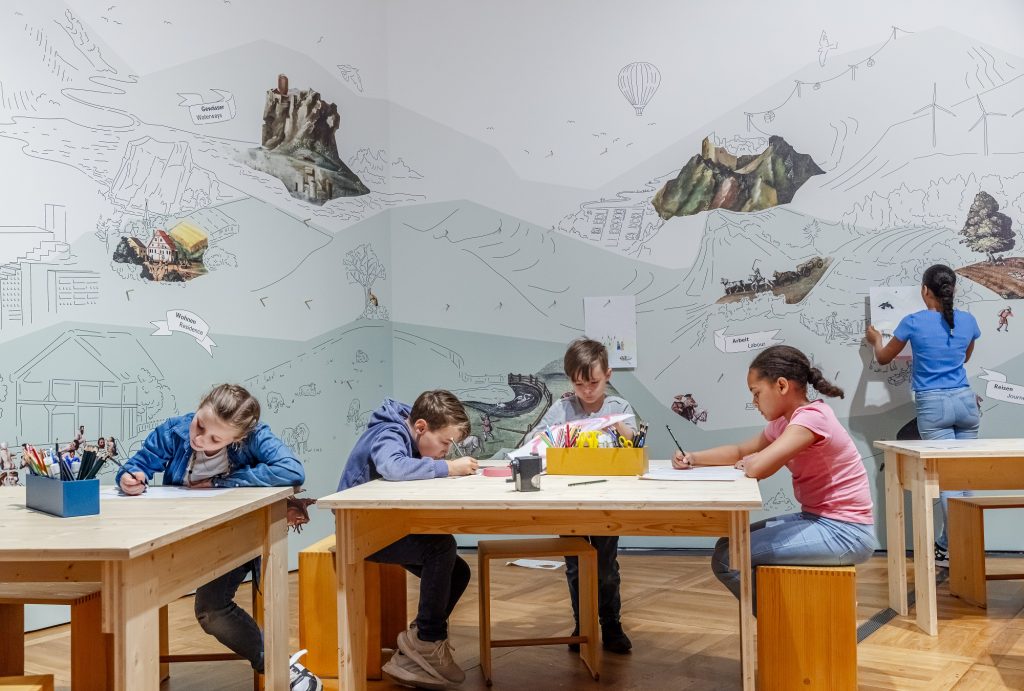
|
Photo: DHM/Thomas Bruns |
Petra LarassPetra Larass is an art historian. As a curator at the German Historical Museum, she is developing the first exhibition area for children and families as part of the new permanent exhibition. |
|
Photo: DHM/Thomas Bruns |
Stephanie NeunerStephanie Neuner is a historian. She is head of the Permanent Exhibition Department at the German Historical Museum. |

